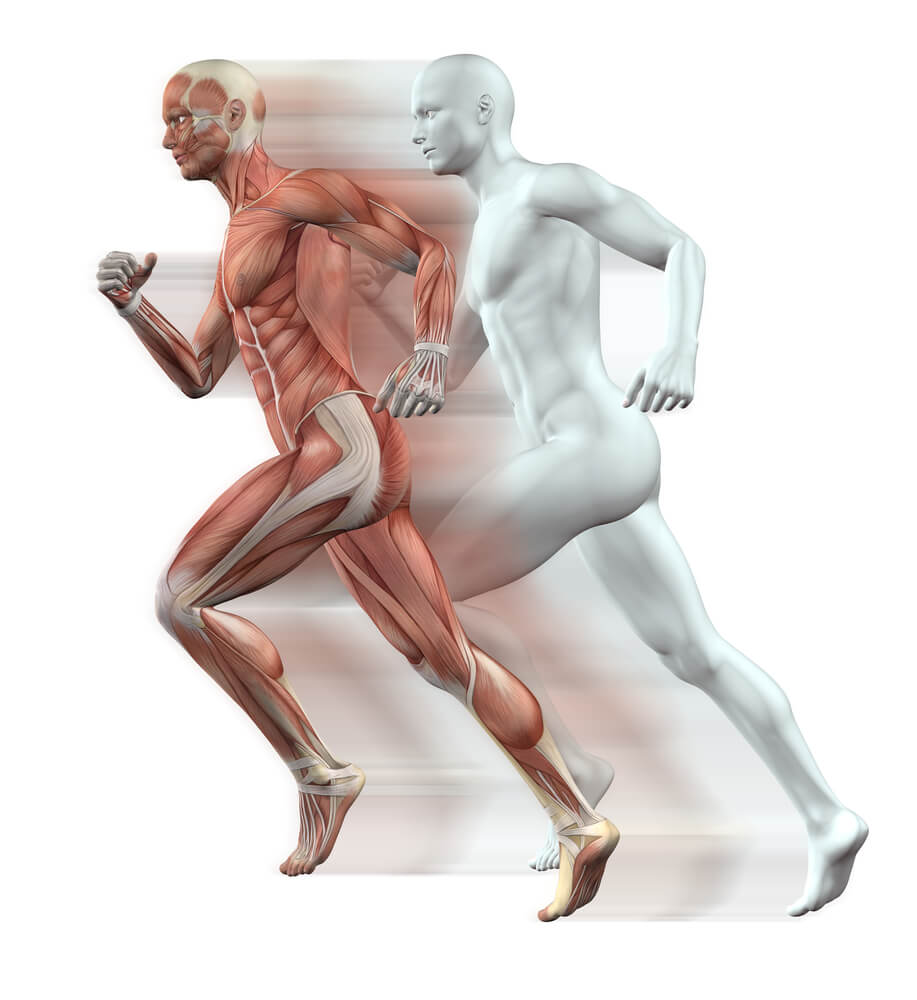
There’s no better feeling than that first time you return to the gym after an extended hiatus. Maybe you were on vacation, or perhaps life just took over and you weren’t able to make it in on a regular basis. Whatever took place, after those first days at the gym you’ll wake up sore, throbbing, and yet know you put in a good amount of effort.
You’ll quickly see your lifts increase in weight and, if you’re on top of your diet as well, you’ll notice improvements in size and definition as well. You’re just riding the weight lifting wave and loving every minute of it.
But then something happens.
It takes longer and longer to increase the weight or number of reps you squeeze out. You’re no longer growing in size and you don’t have that same feeling when you return home from the gym.
Sure, you enjoy the post-gym pump from a solid workout, but something is different. But what exactly happened?
Your muscles have adapted. Your body knows the lifts and what you do in a workout. As human bodies have done for tens of thousands of years, it adapts and alters how it consumes energy.
It’s able to protect vital calories, leaving you left with very little in way of results. It’s something our earliest ancestors relied on to survive. But now, it’s just killing gains.
How do you correct this problem?
Through muscle confusion.
What’s muscle confusion?
Keep on reading, because we have you completely covered.

What is Muscle Confusion
As your body adapts and becomes accustomed to your workouts, the results you experience stops in its track.
In order to avoid this kind of an issue and to continue your strength and size improvements you need to confuse the muscles.
But how do you confuse your muscles?
After all, you can’t really sneak attack your biceps in an attempt to trick yourself. Well you’re not trying to “trick” anything. None of this has to do with your brain knowing what is going on and what is about to happen. It’s all about preventing your muscles from becoming comfortable with the workout.
When at the gym, even as a regular gym goer, have you ever seen someone at the gym perform a new move you’ve never tried before?
It looks like something worth checking out, so you decide to do it yourself.
Then, the next morning, you wake up with that sore muscle feeling like you use to get back when first working out. It’s not like you’ve never touched on those muscles groups before.
However, you are hitting the muscles in a slightly different way. You’re also confusing the muscle fiber.
The idea of muscle confusion is when you change up the workout.
This prevents your muscles from becoming accustomed to a certain move or workout routine.
It’s like, when you were a kid and you were being taught the multiplication tables. You’d learn 3×4, 3×5, 3×6, 3×7 and so on. When you wrote out the answers though, you eventually learned the pattern. Because you knew the pattern you could answer the question quickly.
However, later on, when you received quizzes that mixed up the questions, there wasn’t an actual pattern any longer and you’d need to stop and think, even for a fraction of a second longer.
Avoiding a pattern forces the muscle in question to work harder.
When the same pattern happens over and over, it doesn’t even need to put in any effort. It’s a memorized routine. That’s what happens with your muscles during the same workout routine and that’s what muscle confusion prevents.
So muscle confusion is all about changing up the routine and preventing your muscles from adapting.

How Frequently Should You Change Up the Routine to Avoid Muscle Confusion
Now, you can’t really go into the gym and completely change up the lift routines every single time. There are only so many lifts you can do before you run out.
Thankfully, you don’t need to do it like this. It takes your body time to adapt to the new moves.
Every body is a little bit different, but it takes around six weeks or so for your body to adapt to a new exercise.
So, following the six week adaptation phase, your muscle fibers will remember the exercise.
This stems from muscle memory. We all have muscle memory. It knows how you walk. If you keep your abs tight throughout the day eventually your muscles will lock into position because it’s accustomed to it.
So when you hit this stage, your body will become more adapt at performing the move, which reduces the energy consumption and strain on the muscle tissue.
Due to this, you want to switch the moves you perform usually by the seventh week.
By altering your workout and bringing in new moves (which are often performed at slightly different angles), you’ll keep your muscles guessing, which forces you to use more calories and tear more muscle fiber, allowing you to become larger and stronger.
Did you ever try out P90X when it first came out?
You probably remember the sudden flood of infomercials on television. You couldn’t blink without seeing a new TV spot for it. One of the techniques P90X used to continue muscle development and continue fat loss was through muscle confusion.
After about four weeks or so of the same workout routine you switched it up. The switch up came in two different ways.
First, you worked different muscle groups together (so while you might have worked chest and back at the beginning this switched to chest and legs).
Secondly, you used slightly different moves. This included lift angles and movement types. Even the slightest change, like moving from an overhand grip to an underhand grip, can alter how your body performs a move, which keeps your muscles confused and guessing.

What Constitutes a Muscle Confusion?
So what exactly do you need to do in order to confuse your muscles?
If you go to a gym you have access to just about anything you can possibly think of, so switching up the lifts isn’t all that difficult. But let’s say you don’t go to a gym. Maybe you workout at home, so you are limited to just a few different variations and lifting methods.
Not a problem with that either as there really is ways to change up just about anything you do, regardless of the lift.
Muscle confusion can be accomplished by changing the exercise entirely, by changing the sets, the reps or the loads.
You can also shift the way you perform a given lift, which we’ll get into as well.
Changing the Lift
This is the most obvious way to confuse your muscles. Just change the lift entirely. But, again, if you’re lifting at home you don’t have as many lifting options. Not a problem there. Changing the lift can be as little as changing where you place your arms or your legs.
Let’s say, for example, you perform a regular shoulder squat (or, if you don’t have the barbell at home, a hammer squat). The best way to switch this up is to go into a substantially wider stance.
You’re now performing a sumo squat. This alters the way you hit similar muscle groups. The stretch is slightly different and the point of emphasis shifts. Even though you’re performing the same basic movements with the same basic weights, the shift in your legs will completely change up how your muscles react to the lift.
Now, let’s look at the pullup.
In a similar manner, spread your arms out wider. This shifts the emphasis of the lift.
It will work your muscles in slightly different ways and, even though the movement is similar to the original pullup, it’s different enough to confuse your muscles.
You can do this with just about every lift you perform with the exception of a few key lifts.

Change the Load, Reps and Sets
Changing the lift, squat, pull or push angle will keep your muscles guessing.
However, what happens with those key lifts you can’t really change?
We’re talking about moves like the bench press.
Now, normally, we’d say just go to an incline and decline bench, but chances are you’re doing those as well. So how do you change up lifts when you’re already performing the different variations.
First, you can change your grip. Using palms facing you instead of facing away alters the lift slightly, but for some this is an especially uncomfortable and even unnatural way to perform the lift.
If you’re using a barbell you can use a wider grip or a closer together grip, but that doesn’t work if you have dumbbells. In these instances, you’ll want to change your load, reps and sets.
You see, as you work your muscles, you’ll see gains in size and strength early on.
As you go though, you’ll see both of these slow down. Let’s say you’re going for strength gains, so you’re shooting for around four reps per set.
Now, instead of doing this, go with a lighter weight and aim for size gains, which is around eight to 12 reps per set.
In this way your muscles become confused because you’ve switched the amount of weight suddenly, and you’re performing a different number of sets (likewise, if you were originally lifting for size, switch to boosting strength).
There is another option as well.
Go lighter and go slower.
Chances are, you’re use to putting up your bench (or other lifts) as quickly as possible. But now, substantially reduce the weight and substantially reduce the speed.
Let’s say, for example, you’re putting up 200 pounds on a bench press. Bring this down to 135 (so two 45 pound plates and the 45 pound bar).
But this time, instead of going as fast as you can, you’ll go extremely slow. Take a count of two to lift the weight, hold the weight at the top for a count of two, lower the weight for a count of two, then hold (not resting on your chest) for a count of two.
This keeps your muscles continually engaged.
It also forces your body to lift in a way it is not use to at all. Think of it like walking through sand. You’re use to running on a sidewalk, but then you slow it down and walk through sand. It forces your body to work differently and, in the end, you can really feel it.
It’s all about confusing how your body lifts and how it reacts to what you’re doing. So whether you change the lift all together or just alter how you’re performing the lift, by switching how you lift every seven or eight weeks you’ll continue your gains without the typical plateau.
In Conclusion
If you’re a sports fan that pays attention to the inner-workings of a team’s makeup, you may know when the team brings on a new strength and conditioning coach (this is especially the case with football).
After going through workout sessions with the new coach players often rave about the improvements in their body. You may even notice how much more muscular the players are.
Does some of this have to do with the coach?
Of course. But a good amount of it also revolves around muscle confusion.
The new coach brings new routines and focuses on different kinds of lifts. This confuses the body and, because of this, jump starts the muscle growth and strength process.
If you have noticed your workout has started to flat line and no longer brings with it the same kind of improvements as you’re use to, it’s important for you to bring muscle confusion into the workout.
Besides, doing the exact same lifts over and over week after week, month after month, becomes boring.
Switch it up, make your workout more interesting, and take advantage of an increased level of strength and size gain, all thanks to the magic of muscle confusion.
Terry Asher
Latest posts by Terry Asher (see all)
- Better Family – Product Review Liquid Daily 2 oz - Dec 16, 2024
- Post-Workout Recovery: The Key to Optimal Performance - Nov 25, 2024
- Pre-Workout Supplements – Everything You Need To Know - Nov 18, 2024









[…] via- https://gymjunkies.com/muscle-confusion/ […]
[…] post What is Muscle Confusion? appeared first on Gym […]
thank you for sharing useful information. i like your post